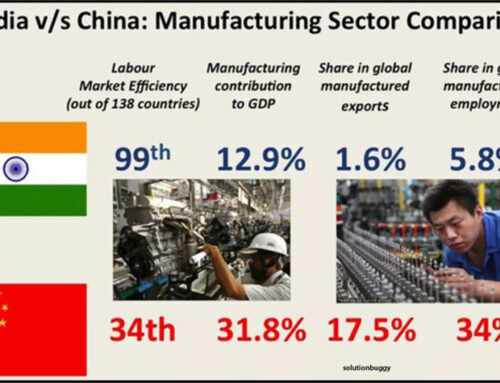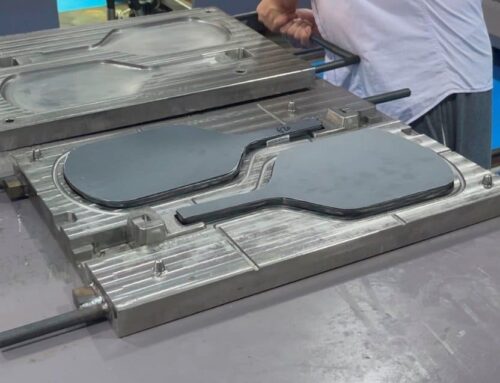When the UPA announced plans to introduce new certification standards for pickleball, it sent shockwaves through the pickleball community, sparking widespread discussion and debate. This issue continues to evolve, and we believe that the pickleball market is on the brink of unprecedented challenges and opportunities. In this article, we will objectively analyze the situation.
What is UPA-A
In May 2024, Major League Pickleball (MLP) and the Professional Pickleball Association (PPA) made a significant and strategic move by breaking away from USA Pickleball, which had been the sport’s governing body since 1984. They established a new organization called the United Pickleball Association of America (UPA-A). This shift not only marks a new era for the pickleball industry but also reflects a growing need for an organization that can better meet the evolving demands of professional play. UPA-A’s formation underscores the ambition to create a more competitive, transparent, and standardized environment for professional pickleball, distinct from the more recreational focus traditionally maintained by USA Pickleball.
UPA-A swiftly partnered with Pickle Pro Labs (PPL), an independent third-party equipment testing organization, and in June 2024, announced the launch of the UPA Certification Program. This program aims to elevate standards for paddle testing, regulation, certification, and compliance monitoring, thereby ensuring that all players compete on a level playing field. Furthermore, this initiative is a clear effort to protect the integrity of the sport, particularly as it experiences unprecedented growth in both participation and viewership across the United States and internationally. The rise of pickleball as one of the fastest-growing sports has brought with it increased scrutiny on equipment standards, making the timing of UPA-A’s formation particularly significant.
PPL’s collaboration with the University of Massachusetts Lowell, renowned for its work in bat and ball testing in partnership with Major League Baseball (MLB), further solidifies the authority of UPA certification. This partnership brings rigorous scientific methodologies to the testing process, which is crucial for ensuring that only the highest-performing paddles are approved for professional play. By leveraging the expertise of a university known for its precision and rigor, UPA-A is setting a new benchmark for equipment standards that could have lasting effects on how the sport is played at the highest levels.
Comparison Between UPA-A and USAP
When discussing certification systems, USAP (USA Pickleball) remains an indispensable entity. Established in 1984, USAP has long been the custodian of pickleball’s rules and regulations, particularly emphasizing the sport’s growth among recreational players. USAP’s certification standards have historically focused on ensuring that equipment meets the basic requirements for casual and competitive play, but without the stringent performance metrics that UPA-A now mandates. This divergence between the two organizations represents the first significant split in the governance of pickleball, akin to the historical rivalry between the NFL and AFL in professional football. Such competition between governing bodies often leads to significant changes in the sport, as seen in the eventual merger of the NFL and AFL, which unified the rules and brought together the best elements of both leagues.
| Parameter | USAP Certification | UPA-A Certification |
|---|---|---|
| Certifying Body | USA Pickleball (USAP) | United Pickleball Association of America (UPA-A) |
| Certification Goal | Ensures paddles used in amateur and professional events meet safety and performance standards | Focuses on professional competition, ensuring paddles perform reliably under high-intensity use |
| Exit Velocity Test | Exit Velocity: Measures the speed after hitting the ball to ensure no unfair advantage. Standard: Maximum speed must not exceed 40 m/s. | Exit Velocity: Uses destructive testing to simulate wear, ensuring the paddle meets the max speed standard of 38 m/s even after wear. |
| Spin Test | Spin Test: Tests surface roughness and spin capability. Standard: Surface roughness must not exceed 80 microns, spin rate within 3000 RPM. | RPM Test: Assesses overall spin capability, especially for professional play. Standard: Spin rate between 3000-3500 RPM. |
| Acoustic Testing | Acoustic Testing: Implemented from 2023, measuring the sound produced when hitting the ball, ensuring volume is below 85 dB. | Audio Tone: Measures the sound tone when hitting the ball, requires sound frequency between 400-800 Hz, volume below 80 dB. |
| Destructive Testing | Does not include destructive testing. | Destructive Testing: Assesses durability after long-term use, simulating performance after 20,000 hits. |
| Material Testing | Material Testing: Collaborates with Element U.S. using independent third-party labs to test material durability and strength. | Material Testing: More stringent, including testing for performance under extreme temperature and humidity, ensuring stability in all conditions. |
| Certification Transparency | Provides detailed test standards and process descriptions, allowing manufacturers to review test details. | Less information disclosure, emphasizes confidentiality but highlights its rigorous testing process. |
| Certification Cost | Cost: Certification fees range from $2,500 to $5,000 per model, depending on the complexity of testing and manufacturer scale. | UPA-A will require brands to pay a base fee of $100,000 annually, plus $5,000 per paddle for certification and regulatory oversight. |
| Certification Duration | Certification is valid for one year, requiring annual re-evaluation for consistency. | Certification is valid for two years, but requires regular spot checks, especially for frequently used paddles. |
| Market Acceptance | Widely accepted in the U.S. market, becoming the standard for amateur and some professional events. | Primarily targets the professional market, gradually gaining recognition in high-end tournaments, potentially becoming an international standard. |
| Certification Applicability | Applies to all paddles, including those for amateur and professional use. | Primarily targets professional competition paddles, with lower certification requirements for amateur paddles. |
USAP Paddle Certification Standards
As the oldest governing body for pickleball in the United States, USAP has traditionally prioritized material-based paddle testing. USAP collaborates with Element U.S. Space & Defense, utilizing independent third-party testing facilities for material inspection. This process ensures that paddles are durable and meet the minimum standards required for safe and fair play. USAP’s certification process is known for its transparency; manufacturers can access the complete testing standards during registration, which has earned USAP a reputation for fairness and reliability. However, this focus on materials, rather than on specific performance metrics, means that USAP-certified paddles are more consistent in build quality than in performance variability. This approach has worked well for recreational players, but as the sport grows, the need for more performance-oriented standards has become apparent.
UPA-A Paddle Certification Standards
In contrast, UPA-A has emerged as a powerful new force, emphasizing paddle performance in professional settings. UPA-A’s testing regime covers three main aspects: ball speed, spin, and audio pitch. These factors are critical in professional play, where even slight differences in paddle performance can determine the outcome of a match. UPA-A’s certification process also includes destructive testing of paddle durability, ensuring that certified paddles not only perform well initially but also maintain consistent performance throughout their lifecycle. This level of scrutiny is designed to uphold the integrity of competitive play and to ensure that no paddle provides an undue advantage based on inconsistencies or flaws that might develop over time.
Furthermore, UPA-A’s focus on performance metrics is likely to appeal to serious players and professionals who seek equipment that gives them a competitive edge. The inclusion of audio pitch testing, for example, reflects an understanding of how different sound frequencies can affect gameplay, particularly in high-pressure tournament settings. This nuanced approach to paddle certification could set a new standard in the industry, making UPA-A certification a sought-after mark of quality.
Comparison of the Two Certification Standards
While both USAP and UPA-A share the common goal of certifying paddles, their methodologies and areas of focus are significantly different. USAP’s approach is rooted in the traditional standards of material testing, reflecting its long history and focus on recreational play. In contrast, UPA-A’s standards are more demanding, with a clear emphasis on the high-performance requirements of professional athletes. This difference in focus suggests that the two certification bodies are catering to different segments of the market, with USAP appealing more to recreational players and UPA-A targeting the professional circuit. This division could lead to a bifurcated market, where players and manufacturers must choose which certification to prioritize, potentially complicating the landscape for consumers and industry stakeholders alike.
The existence of these two divergent standards raises important questions about the future of pickleball as a sport. Will one standard eventually dominate, or will both continue to coexist, serving different segments of the market? The answer to this question could have significant implications for the development of pickleball, influencing everything from how the sport is played to how it is perceived by the broader sporting community.
Potential Market Impact of UPA-A Certification
Impact on Brands
For paddle manufacturers, being associated with professional competitions is essential for brand visibility and growth. Brands like Proton have thrived due to their exposure in high-profile tournaments, and the introduction of UPA-A certification is poised to become a significant factor in maintaining or gaining such exposure. Beginning in 2025, UPA-A will require brands to pay a base fee of $100,000 annually, plus $5,000 per paddle for certification and regulatory oversight. This substantial financial burden will likely drive smaller brands out of the market or force them to merge with larger, more established companies.
Larger brands, however, may benefit from this new structure, as it could further solidify their dominance in the market. The new fees and certification requirements might act as a barrier to entry for new competitors, reducing market diversity and potentially stifling innovation. This trend could lead to further consolidation in the industry, similar to recent mergers like ProXR Pickleball, Paddletek, and Boundless Pickleball. The result may be fewer, but more powerful, players in the market, which could reduce consumer choice and lead to higher prices.
Conversely, for small and medium-sized enterprises (SMEs), UPA-A certification could be a double-edged sword. On one hand, achieving certification could significantly boost their brand’s credibility and open doors to higher-end markets. On the other hand, the high costs associated with certification might strain their financial resources, limiting their ability to compete with larger brands. Nevertheless, for those SMEs that can navigate these challenges, UPA-A certification could serve as a powerful differentiator in a crowded market.
Moreover, the shift towards UPA-A certification may also influence the types of paddles that manufacturers produce. As brands aim to meet the more rigorous standards set by UPA-A, there may be a trend towards the development of paddles that prioritize performance attributes like speed, spin, and durability. This could lead to a new wave of innovation in paddle design, as manufacturers seek to differentiate their products in a market where performance metrics become increasingly important.
Impact on Chinese Suppliers
For Chinese suppliers, UPA-A certification represents both an opportunity and a challenge. Suppliers with strong financial backing and technical expertise are likely to adapt quickly to the new certification requirements, positioning themselves as key players in the global supply chain for high-performance pickleball paddles. These suppliers could see increased demand from brands seeking to comply with UPA-A standards, potentially leading to significant growth in their business.
However, for less established suppliers, the stringent requirements of UPA-A certification could be a formidable obstacle. The costs and technical demands of certification might force these suppliers to either significantly upgrade their operations or risk being pushed out of the market. This situation could lead to a consolidation within the supplier market as well, with only the most capable and well-funded companies surviving the transition to UPA-A standards.
The influence of UPA-A certification on Chinese suppliers could also extend to the broader global market. As Chinese suppliers adapt to the new standards, they may begin to export UPA-A certified paddles to international markets, potentially altering the competitive dynamics in regions like Europe and Asia. This could lead to a global standardization of paddle quality, driven by the widespread adoption of UPA-A certification.
Impact on Consumers
The introduction of UPA-A certification is likely to have a profound impact on consumers, particularly those who are serious about their pickleball equipment. As smaller brands are squeezed out of the market, consumers may find that their choices become more limited, with a focus on high-end, performance-oriented paddles. This shift could result in higher prices, as the reduced competition allows remaining brands to increase their margins.
Moreover, the existence of dual certification standards (UPA-A and USAP) could create confusion among consumers, especially those who are less familiar with the nuances of each certification. Players
may need to decide whether to invest in UPA-A certified paddles, which may become the gold standard for professional play, or stick with USAP-certified equipment that might be more accessible and affordable. This could lead to a split in the market, with UPA-A certified paddles being favored by professionals and serious amateurs, while USAP-certified paddles continue to dominate the recreational market.
Additionally, the focus on performance metrics could lead to the emergence of a new class of “performance-oriented” consumers who prioritize UPA-A certification when selecting their equipment. This could create a market where high-performance paddles are seen as a status symbol, further driving up prices and creating a wider gap between casual and professional players. The potential for such a divide raises important questions about the future accessibility of pickleball as the sport continues to grow.
conclusion
In conclusion, the introduction of UPA-A certification will bring about significant changes in the pickleball industry. While it offers opportunities for brands and suppliers to distinguish themselves through higher standards, it also presents challenges that could reshape the competitive landscape. As the industry adapts to these new standards, stakeholders across the board—from manufacturers to consumers—will need to navigate the complexities of a market that is becoming increasingly divided by differing certification standards. The ultimate impact of UPA-A certification will depend on how effectively the industry can adapt to these changes and how consumers respond to the new options available to them. The evolution of these standards may well define the next chapter of pickleball’s growth, both in the United States and around the world.
The End about Mayvoci
1)Design:Over 100 paddle designs and photography service to assist start-up.
2)Professional:Focus on various of paddles manufacturing for 6 years
3)Quality:Strict quality management system to provide safety and satisfaction for customers
4)Amazon:Flexible comprehensive solution to make sure each Amazon seller is well cared.
5)Excellent Team:Experienced paddle experts & dynamic sales team give you 5-star service





